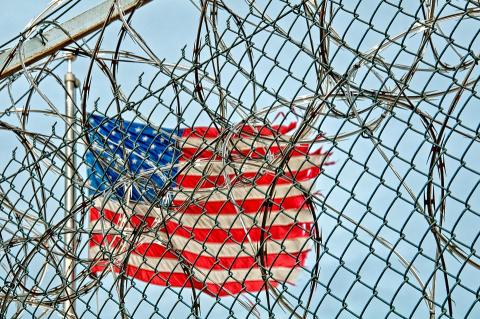Access to higher education has been on the forefront of the political sphere over the past two presidential races, with both parties agreeing that students need to be educated in order to succeed in today’s competitive and rapidly advancing workforce. At the same time, higher education has changed drastically with the influx of technology making it more accessible to students of all ages and locations.
There is a significant population of individuals who aren’t considered in this educational discourse, however: members of the U.S. prison population.
Each year, an alarming amount of prisoners are released in the U.S., but low reading and technological literacy, combined with a reluctance from companies to hire former inmates, means that these populations are vulnerable to unemployment.
For these 650,000 prisoners, unemployment can have a number of negative affects, leaving them vulnerable to poverty, homelessness, and recidivism.
According to a 2010 study by the Center for Economic and Policy Research, low employment rates of former inmates have a high cost in society as well, with upwards of $65 billion in lost economic activity each year.
David Williams, former president of the Kentucky Senate and 2012 gubernatorial nominee, believes that the U.S. “incarcerates too many people at too great a cost.” It’s a cost that many policymakers and educators are now working together to offset, largely through offering job training and higher education to incarcerated individuals.
Many leaders in higher education are stepping up to help educate inmates, teaching them the skills necessary to transition into a successful career including mastering technology, bridging the skills gap, teaching real-world knowledge, and soft skills that potential employers are seeking in today’s job market.
One successful example, NPR’s Yuki Noguchi reports, is the Bard Prison Initiative. The college baccalaureate program took its roots in 1999, and now provides college education to 300 incarcerated students in six different locations in New York State.
“The students appear more engaged than some of the history seminars I remember,” Noguchi writes about her experience looking in over a history course. “And in fact, the syllabus, requirements and professors are no different than they are at Bard College’s main campus, 30 miles away.”
The program’s academic rigor is largely unmatched and has proven to be a positive experience for the incarcerated populations it serves.
As reported by NPR, the recidivism rate for BPI graduates is around 4 percent. Comparatively, the average recidivism rate for the general prison population hovers around 60 percent.
New York Governor Andrew Cuomo notes that programs similar to BPI’s program will save taxpayer dollars in the long run, costing a mere $5,000 a year per person, which is significant when it comes to the cost of recidivism.
“Forget nice; let’s talk about self-interest,” Cuomo responded in a 2014 interview. “You pay $60,000 for a prison cell for a year. You put a guy away for 10 years, that’s 600 grand. Right now, chances are almost half, that once he’s released, he’s going to come right back.”
Yet for many constituents, the idea of educating those behind bars while law-abiding citizens struggle to pay for their college tuition is a sore subject. It’s a sentiment that matches former President Bill Clinton’s tough-on-crime bill that was passed in the 1990s. While expanding the American prison system, the bill also eliminated federal student aid programs for inmates.
“There must be no doubt about whose side we’re on,” Clinton once argued. “People who commit crimes should be caught, convicted, and punished. This bill puts government on the side of those who abide by the law, not those who break it.”
Those who have spent extensive time studying the prison industry now agree that this is a misguided mindset, well-intended as the thought may be.
“I was very disappointed that the policy had been changed,” says Gerald Gaes, who worked for the Federal Bureau of Prisons before the Clinton policies took effect, adding later that college courses behind prison bars are better for inmates and for the communities they’re released into.
Inmates agree, noting that with job training and access to high level courses, they are able to become productive members of society.
“The better we do in here, the better we are when we exit,” Jerome Boone, who is serving a 15-year sentence and currently taking college level courses in California, tells NPR’s Eric Westervelt. “If we come in here and just stay the people we are when we come in, you know, without any growth or insight or any opportunity to better ourselves, we’re gonna get out that same person.”
Photo Source: Pixabay
